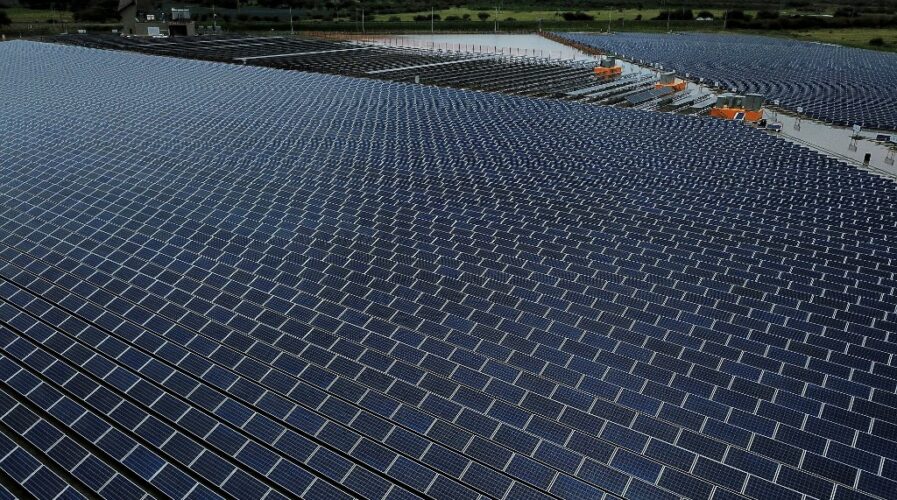
Green AI can strengthen climate predictions, enable smarter decision-making in sustainable supply chains, and help allocate renewable energy. Source: AFP
Is ‘Green AI’ the same as environmental AI?
- The world may have seen incredible advances in AI, but in terms of efficient energy usage, we’re still at the frontier
- The upside is that AI can strengthen climate predictions, enable smarter decision-making for decarbonizing industries from building to transport, and work out the best way to allocate renewable energy
Artificial intelligence (or AI as it’s commonly known as) has become so entrenched in our industrial lives at this point, and is common parlance in certain workplaces just like how big data and analytics are becoming everpresent in enterprise boardrooms. AI applications abound in a dizzying number of fields today, and it is safe to say that AI-driven capabilities have become ubiquitous in the workplace.
However, what most of us failed to realize that oftentimes is the many high-profile advances in AI that have staggering carbon footprints. Well, even Google forced out a prominent AI ethics researcher Timnit Gebru after she voiced frustration with the company for making her withdraw a research paper.
Gebru’s paper stated the risks of AI and by some estimates, training an AI model generates as much carbon emissions as it takes to build and drive five cars over their lifetimes. Gebru’s draft paper also pointed out that the sheer resources required to build and sustain such large AI models mean they tend to benefit wealthy organizations, while climate change hits marginalized communities hardest.
In a 2019 study, a research team from the University of Massachusetts had analyzed several natural language processing training models and the energy consumed by these models was converted into carbon emissions and electricity cost. It was then found that training an AI language-processing system generates an astounding 1,400 pounds (635 kg) of emission.
The study further noticed that this number can even reach up to 78,000 pounds (over 35,000 kg) depending on the scale of the AI experiment and the source of power used. This is equivalent to 125 round trip flights between New York and Beijing.
What can be done?
The irony is that AI seems to play a dual role. As AI is itself a significant emitter of carbon, it can also help reduce the effects of the climate crisis through various forms. Lately, experts have been calling for the prioritization of “Green AI” efforts that focus on the energy efficiency of AI systems.
Green AI refers to AI research that yields novel results without increasing computational cost, and ideally reducing it, whereas Red AI has resulted in rapidly escalating computational and thus carbon costs. In another 2019 paper, the co-founders of AI Now Institute, Roel Dobbe and Meredith Whittaker, gave seven recommendations that could help draft a “tech-aware climate policy and climate-aware tech policy”.
They included forcing companies to provide full energy and carbon transparency; accounting for the full-stack supply chain, including all the steps from mining minerals for the chips to waste produced by consumer gadgets and understanding rebound effects, and ensuring no increase in fossil fuel consumption.
Other recommendations include calculating the energy and climate impacts of AI as a standard part of the policy practice; Integrating tech regulation and green deal policymaking; curbing the use of AI for fossil fuel extraction and Identifying how AI harms and excludes climate refugees.
Impact of green AI on businesses
Green AI can be a net positive contributor to environmental sustainability in many industries for an instance in agriculture, AI can transform production by better monitoring and managing environmental conditions and crop yields. The technology can also help reduce both fertilizer and water, all while improving crop yields.
In terms of energy, AI can use deep predictive capabilities and intelligent grid systems to manage the demand and supply of renewable energy. The cost and unnecessary carbon pollution generation can be slashed. Looking through a transportation industry lens, AI can help reduce traffic congestion, improve the transport of cargo (supply chain logistics), and enable more and more autonomous driving capability.
READ MORE
- Strategies for Democratizing GenAI
- The criticality of endpoint management in cybersecurity and operations
- Ethical AI: The renewed importance of safeguarding data and customer privacy in Generative AI applications
- How Japan balances AI-driven opportunities with cybersecurity needs
- Deploying SASE: Benchmarking your approach


